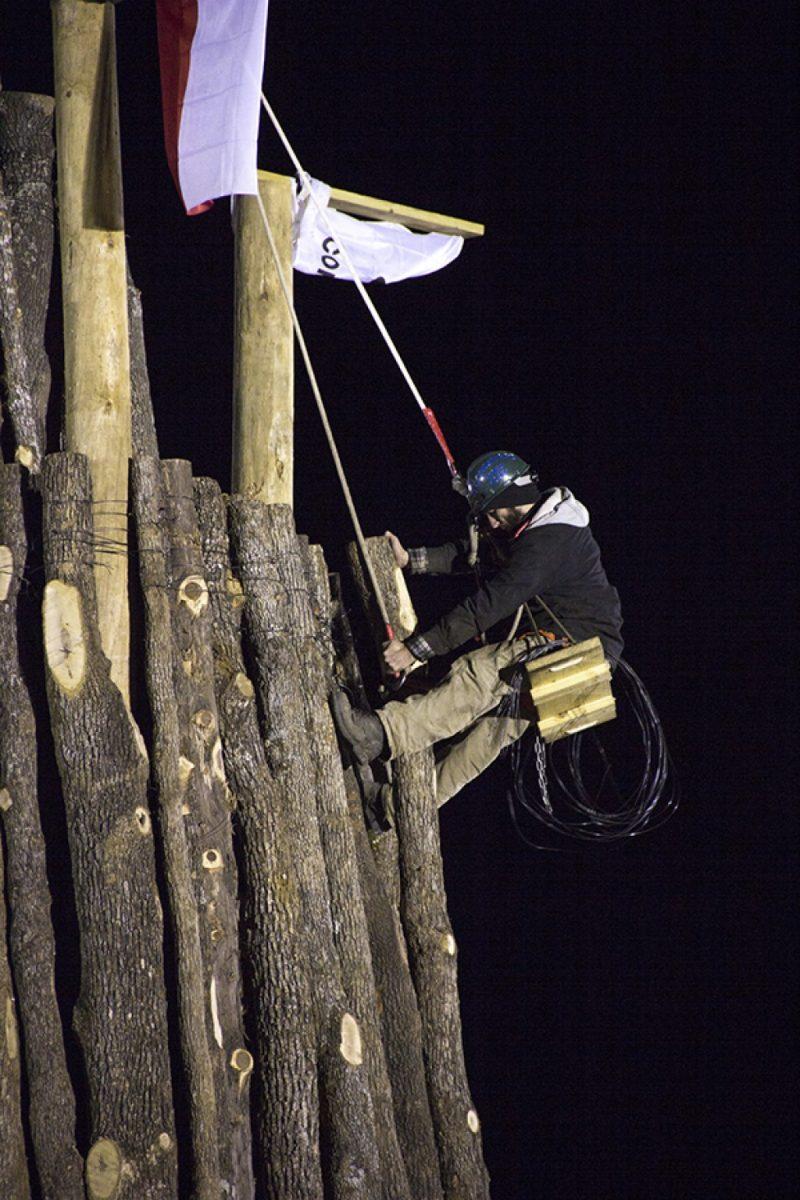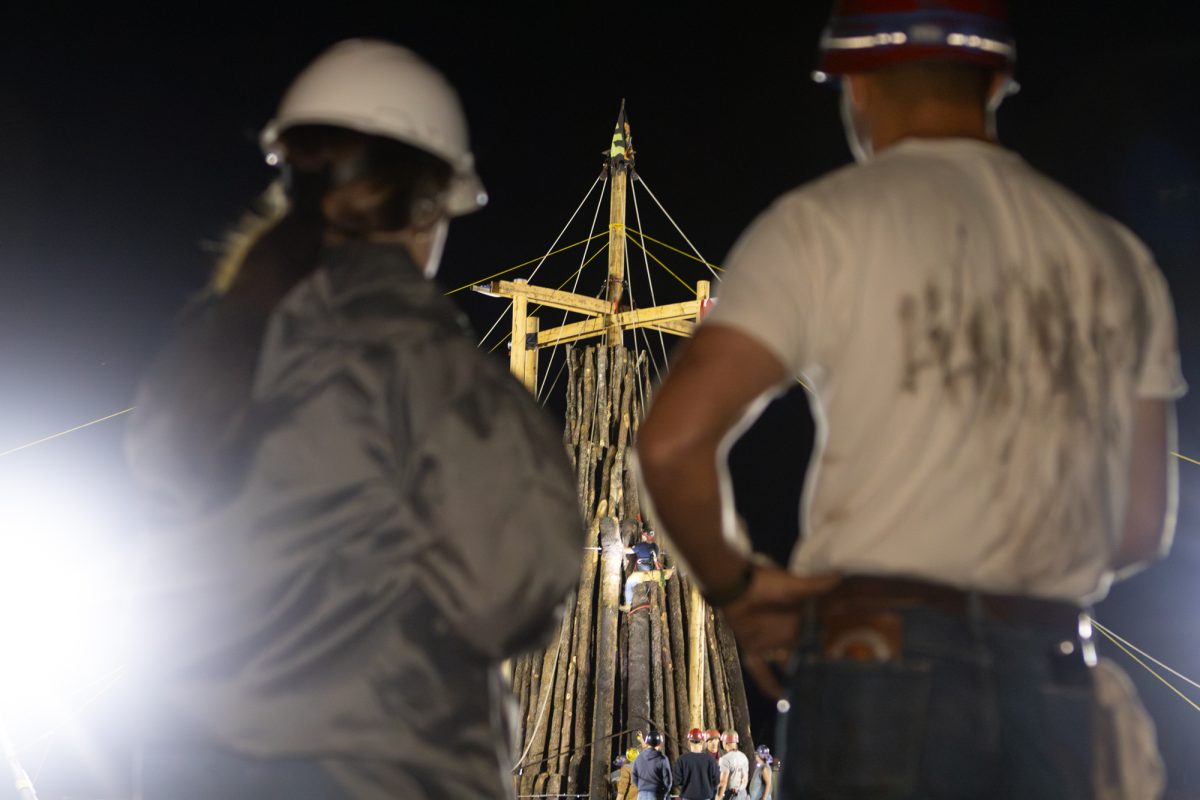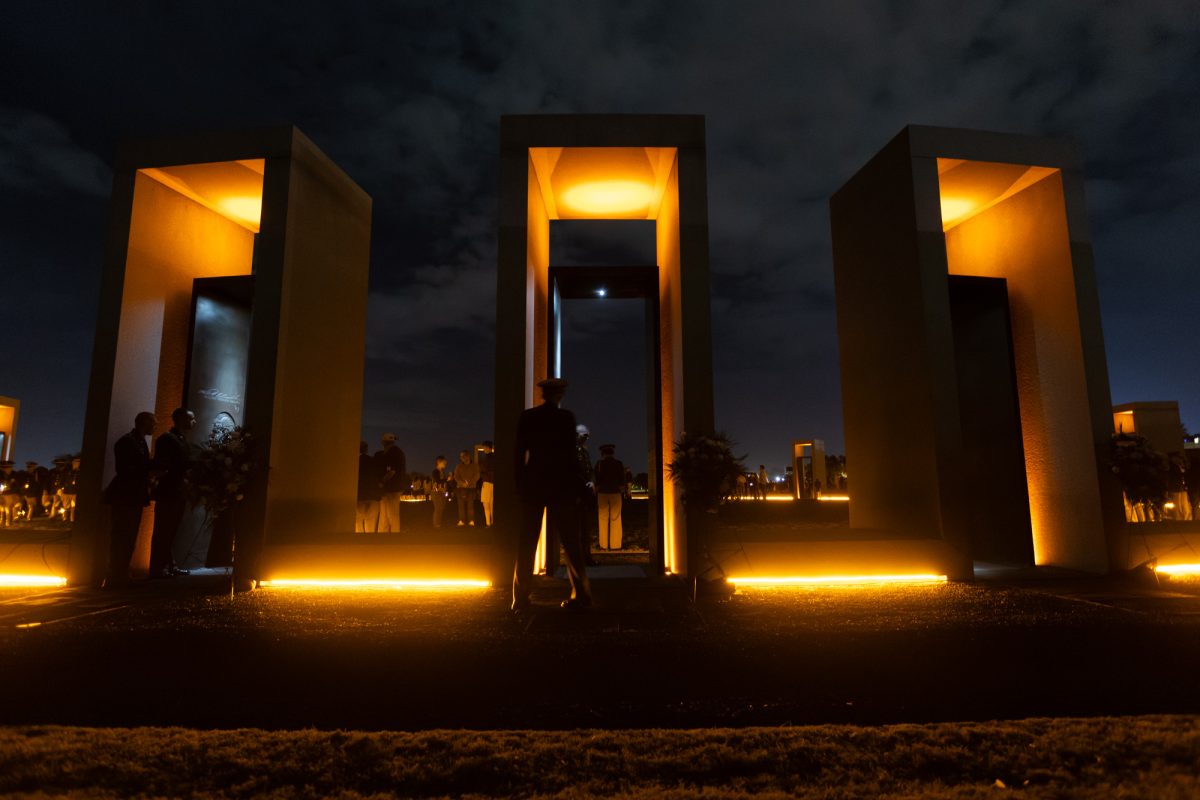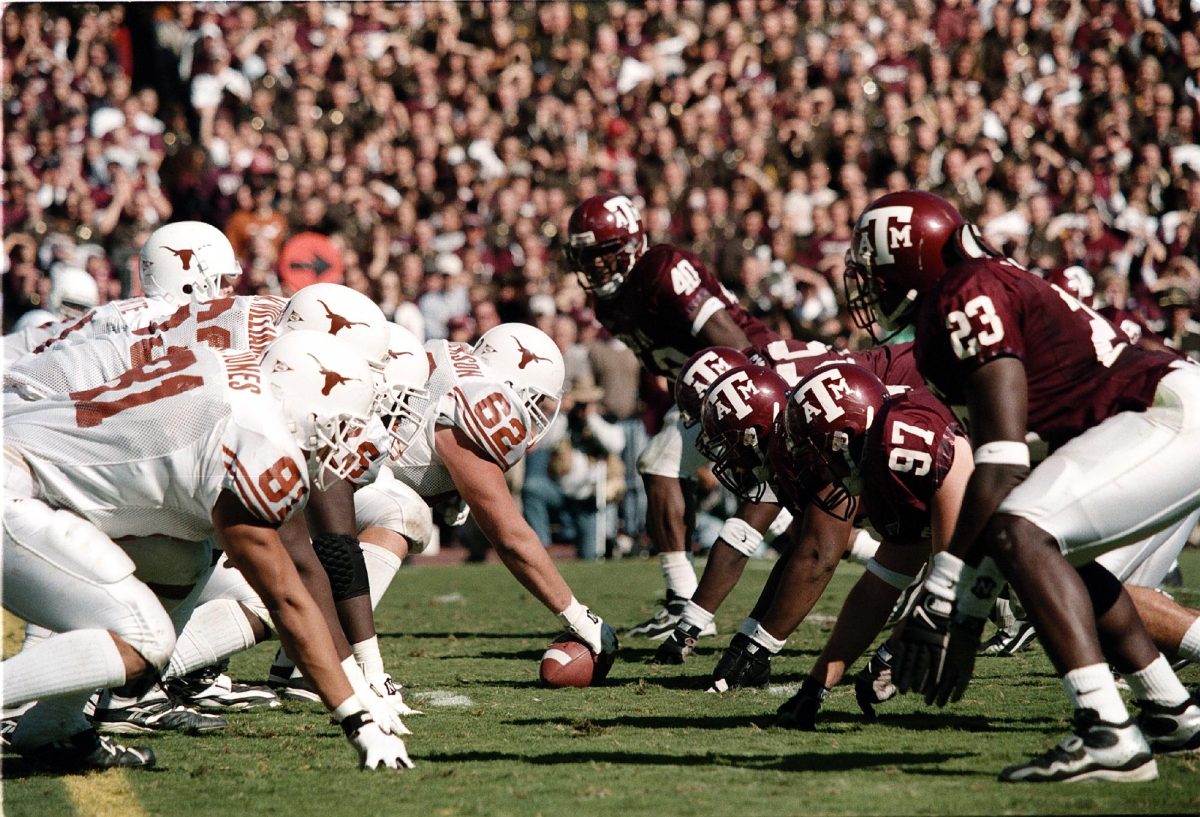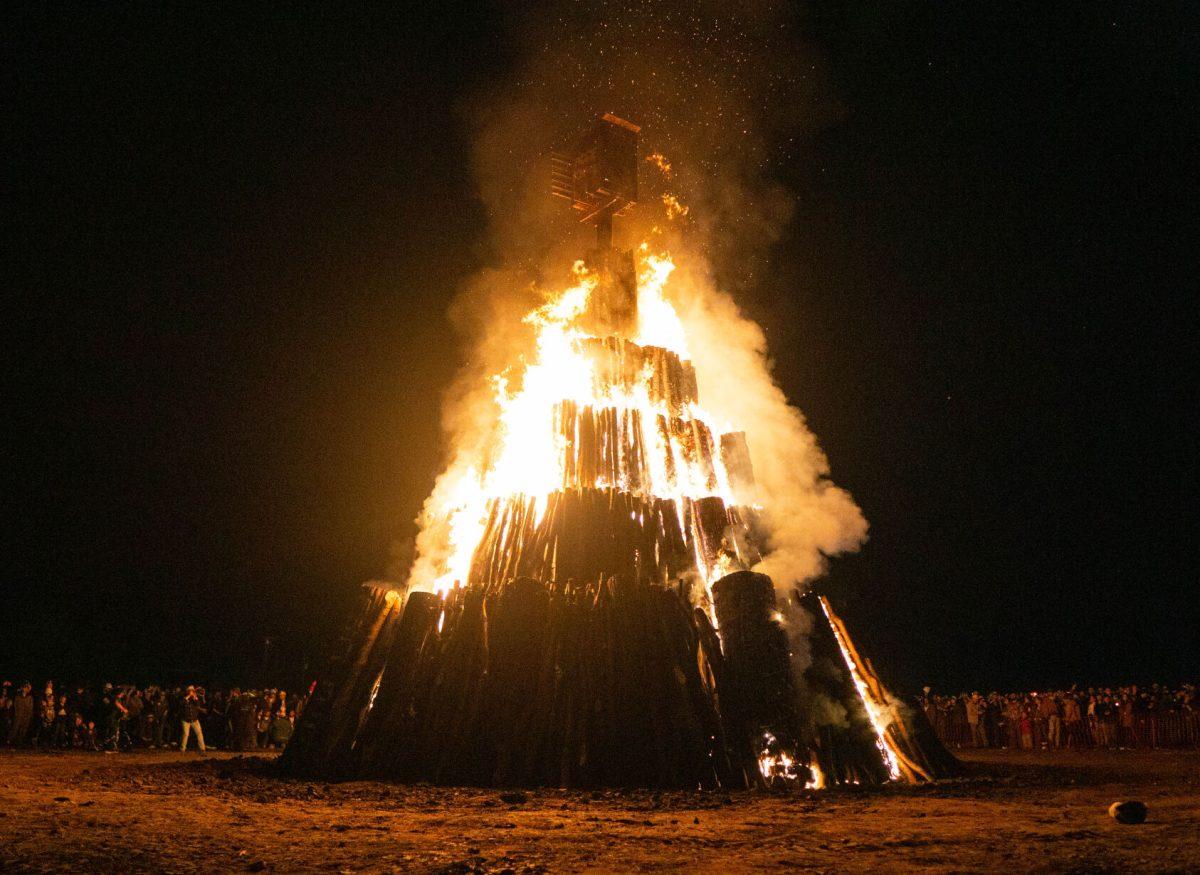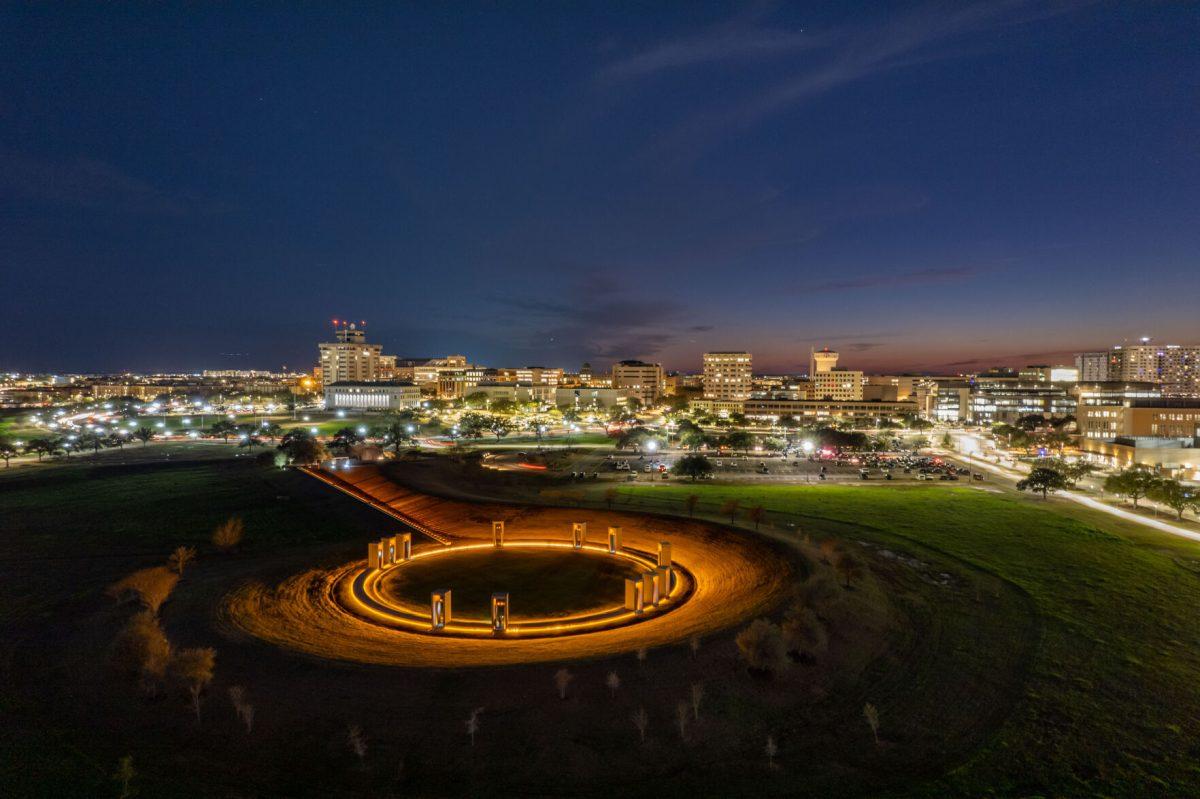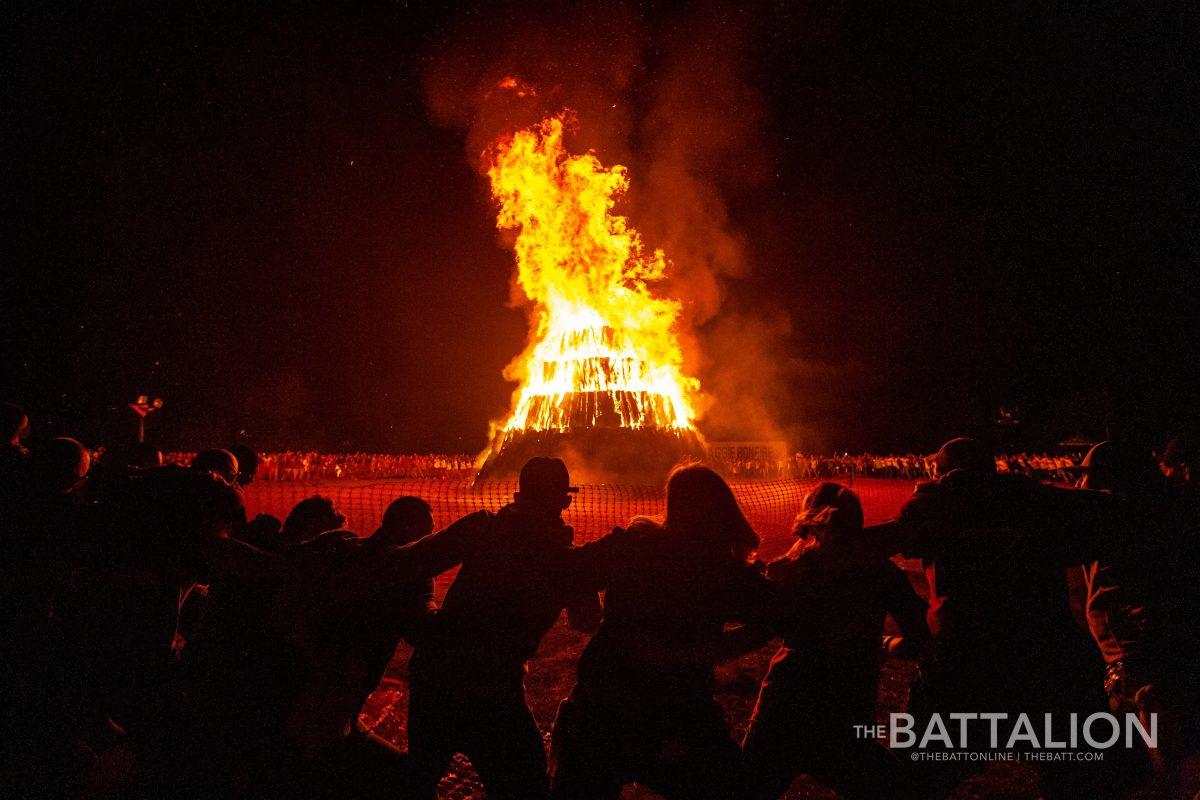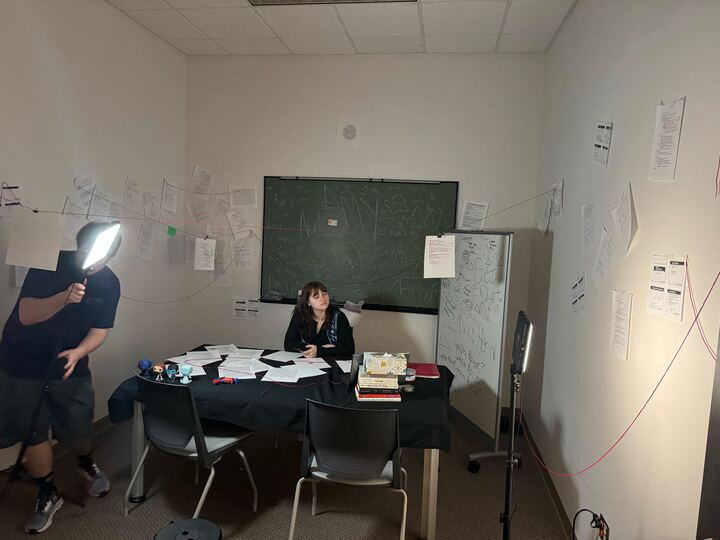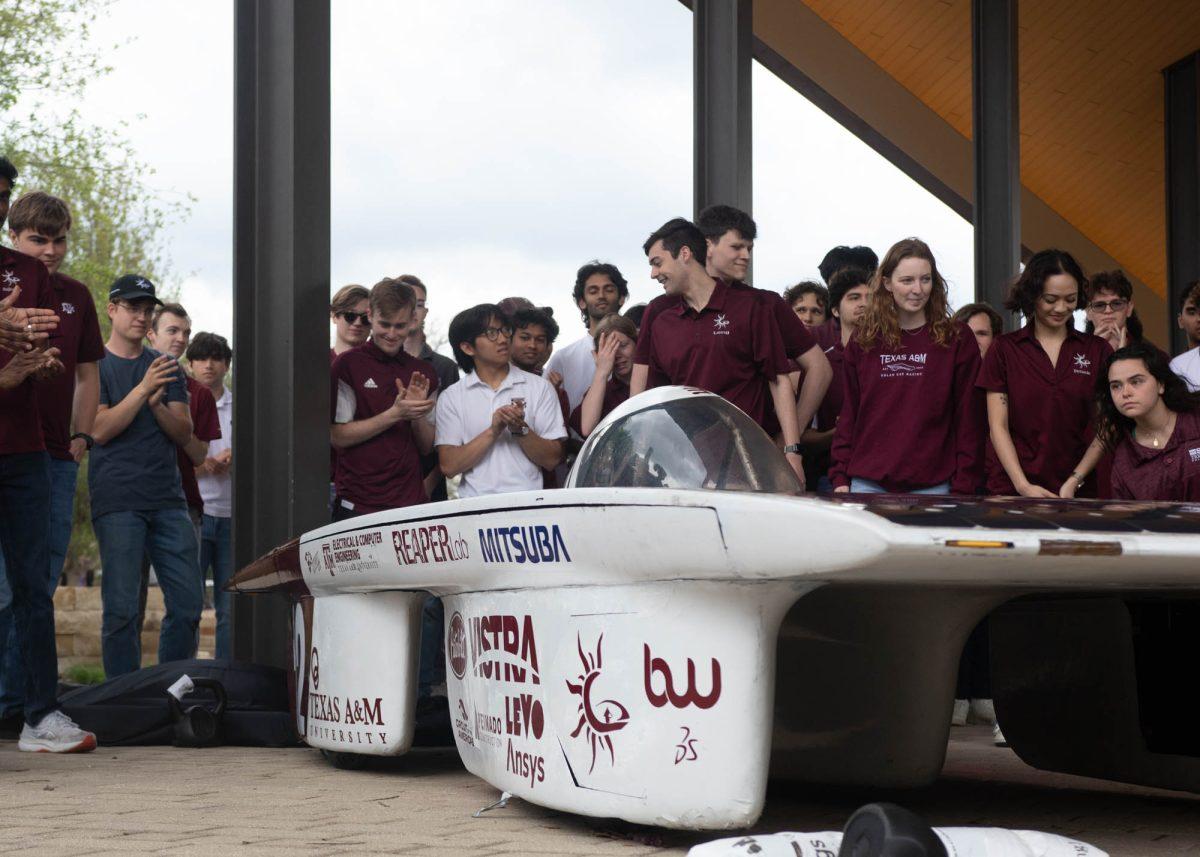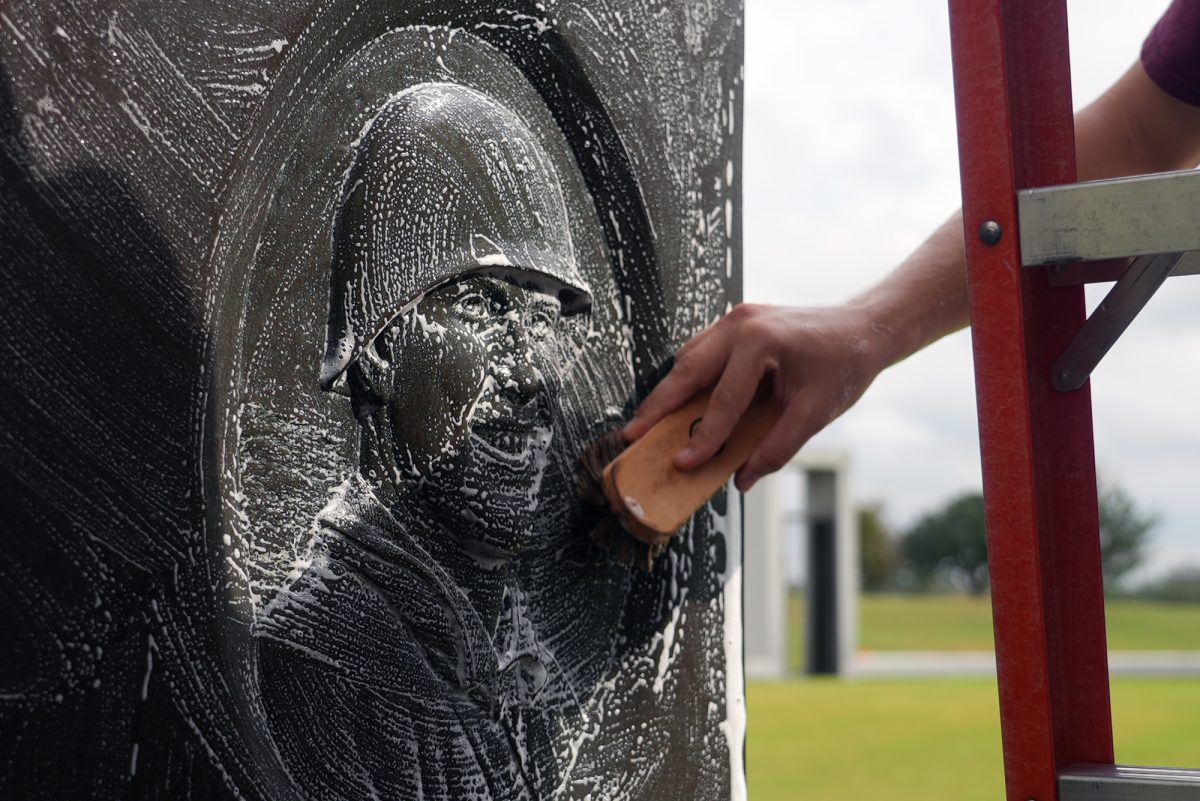The cutting, the stacking, the burning — student workers approach all aspects of student bonfire with the common priority of safety.
Ben Rathbone, physics sophomore, is a yellowpot, a designated “middleman” between crews and the highest chain of command, redpots. Rathbone said part of his role as yellowpot is ensuring that crews are abiding by safety guidelines. Rathbone said attention to these safety guidelines is evident throughout each rank of the organization.
“It’s definitely a very important part of bonfire now ever since the collapse,” Rathbone said. “People would see it as a negative connotation if safety wasn’t our most important feature. We have implemented quite a few new strategies since the collapse to keep the bonfire a lot safer.”
One such strategy began once bonfire started up again in 2002. Joseph Howard, redpot and agricultural systems management senior, said the way Stack is now constructed reflects bonfire’s adherence to the new and improved safety protocol.
“Out here at Stack, the biggest difference from ’99 is all of our logs touch the ground,” Howard said. “So none of the logs are stacked on top of each other. The ones in the middle are just longer than each successive tier outward.”
Andrew Pekowski, redpot and geology senior, said there is a limit to how many people can be within the perimeter of the Stack site.
“We start the construction with the perimeter, we mark the perimeter out with four holes,” Pekowski said. “And within that perimeter, only a select few important individuals will be allowed in the perimeter at any time, so no unnecessary personnel in the perimeter ever.”
Those allowed within the perimeter, or the “safety zone,” are required to exit as soon as their task is completed.
“Anyone in perimeter has to be running,” Pekowski said. “If there’s anyone who’s not stationed in the perimeter directly, they come in and they have to run and then they have to run out so that they’re not in perimeter longer than they need to be.”
Part of each crew’s duty while at Stack site is to carry the logs from a designated area away from Stack to the edge of the perimeter and then finally to Stack itself inside the perimeter. Pekowski said it is the job of the crew chiefs to give commands when lifting, carrying and setting down the logs.
“They go over the commands really well so everybody knows exactly what’s going on,” Pekowski said. “Anytime anything important like that is being done, it’s quiet. Just for safety reasons, no one will talk, it’ll be quiet and the crew chief in charge will be able to give commands without being interrupted or having to talk over anybody.”
Once the logs are placed within the perimeter, they’re raised up to be set against the Stack by bonfire members suspended in swings.
“There are four swinging on the Stack any time, they all have harnesses and are attached to a safety line directly to the centerpole of Stack and they all have pots and safety harnesses attached at all times,” Pekowski said.
Howard said the larger poles placed in the center and on the outer layers of the Stack are used to keep the Stack as sturdy as possible.
“Those windle sticks and the centerpole are both buried deep into the ground, 10 feet for the outer four and 15 for the center,” Howard said. “And so those have cross ties in between them that are welded together that make it a solid unit. It’s a nice framework to build everything out from.”
Over time, the centerpole design has gone through a few changes to ensure the Stack had a better foundation, Howard said.
“Back in the day, to get those 90, 100-foot-tall stacks they had to splice together multiple poles,” Howard said. “Now we don’t do that, we just use one single center pole. So there’s not that weak spot in the middle. The perimeter poles, the four around the outside with the lines attached to them, keep everything nice and straight and they’re wrapped around that center pole in such a way that in order for one side to loosen, it will tighten the others. So it’s unable to spin and come unraveled and all that.”
Pekowski said the students of bonfire are required to go through introductory safety measures at the beginning of the bonfire season.
“We have cut classes at the beginning of the year to ensure all participants know their safety rules,” Pekowski said. “And no one is allowed in the woods or at Stack ever without going through a safety class first. The form our participants sign to go over all the safety rules. They have to sign a couple documents themselves after going through all the safety rules, so no one has ever participated without knowing exactly what they’re getting themselves into.”
The zero tolerance policy is followed and respected by all members of bonfire, Pekowski said.
“There’s absolutely no horseplay out there, there’s no alcohol, no fighting,” Pekowski said. “All that stuff there’s zero tolerance and that keeps things really safe when everyone is working together and not doing stuff they shouldn’t. All that stuff is kind of unwritten rules. It’s followed without question.”
Pekwoski said student bonfire is made possible by the safety measures put in place for them to follow.
“We can’t do what we do without being safe,” Pekowski said. “It’s just in its nature, the work that we do is relatively dangerous. You have students moving 1,000 pounds of logs at a time. It’s dangerous. You have to be careful and people have to know what they’re doing, people have to listen and just be cautious at all times.”
A student bonfire member directs logs into place while suspended on a swing and safety harness at the bonfire stack site.
Photo by Cody Franklin
Safety at heart of student bonfire precautions, prep
November 16, 2014
0
Donate to The Battalion
Your donation will support the student journalists of Texas A&M University - College Station. Your contribution will allow us to purchase equipment and cover our annual website hosting costs.
More to Discover



